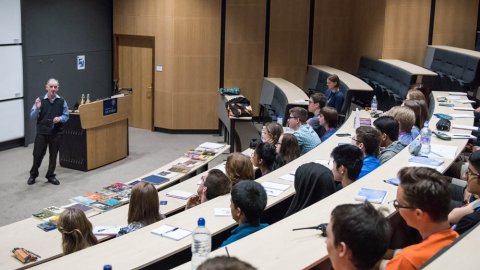12:45
(0,2) dualities and 4-simplices
Abstract
3d N=2 Chern-Simons-matter theories have a large variety of boundary conditions that preserve 2d N=(0,2) supersymmetry, and support chiral algebras. I'll discuss some examples of how the chiral algebras transform across dualities. I'll then explain how to construct duality interfaces in 3d N=2 theories, and relate dualities *of* duality interfaces to "Pachner moves" in triangulations of 4-manifolds. Based on recent and upcoming work with K. Costello, D. Gaiotto, and N. Paquette.




